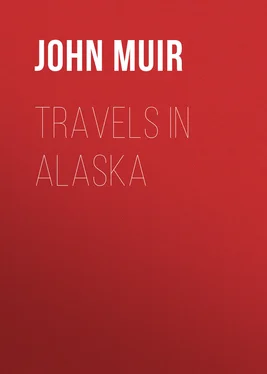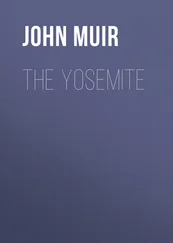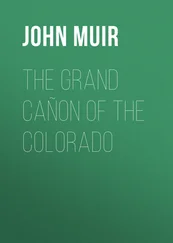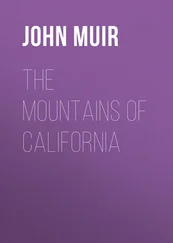John Muir - Travels in Alaska
Здесь есть возможность читать онлайн «John Muir - Travels in Alaska» — ознакомительный отрывок электронной книги совершенно бесплатно, а после прочтения отрывка купить полную версию. В некоторых случаях можно слушать аудио, скачать через торрент в формате fb2 и присутствует краткое содержание. Жанр: Путешествия и география, История, foreign_edu, foreign_antique, foreign_prose, на английском языке. Описание произведения, (предисловие) а так же отзывы посетителей доступны на портале библиотеки ЛибКат.
- Название:Travels in Alaska
- Автор:
- Жанр:
- Год:неизвестен
- ISBN:нет данных
- Рейтинг книги:4 / 5. Голосов: 1
-
Избранное:Добавить в избранное
- Отзывы:
-
Ваша оценка:
- 80
- 1
- 2
- 3
- 4
- 5
Travels in Alaska: краткое содержание, описание и аннотация
Предлагаем к чтению аннотацию, описание, краткое содержание или предисловие (зависит от того, что написал сам автор книги «Travels in Alaska»). Если вы не нашли необходимую информацию о книге — напишите в комментариях, мы постараемся отыскать её.
Travels in Alaska — читать онлайн ознакомительный отрывок
Ниже представлен текст книги, разбитый по страницам. Система сохранения места последней прочитанной страницы, позволяет с удобством читать онлайн бесплатно книгу «Travels in Alaska», без необходимости каждый раз заново искать на чём Вы остановились. Поставьте закладку, и сможете в любой момент перейти на страницу, на которой закончили чтение.
Интервал:
Закладка:
The canals, channels, straits, passages, sounds, etc., are subordinate to the same glacial conditions in their forms, trends, and extent as those which determined the forms, trends, and distribution of the land-masses, their basins being the parts of the pre-glacial margin of the continent, eroded to varying depths below sea-level, and into which, of course, the ocean waters flowed as the ice was melted out of them. Had the general glacial denudation been much less, these ocean ways over which we are sailing would have been valleys and cañons and lakes; and the islands rounded hills and ridges, landscapes with undulating features like those found above sea-level wherever the rocks and glacial conditions are similar. In general, the island-bound channels are like rivers, not only in separate reaches as seen from the deck of a vessel, but continuously so for hundreds of miles in the case of the longest of them. The tide-currents, the fresh driftwood, the inflowing streams, and the luxuriant foliage of the out-leaning trees on the shores make this resemblance all the more complete. The largest islands look like part of the mainland in any view to be had of them from the ship, but far the greater number are small, and appreciable as islands, scores of them being less than a mile long. These the eye easily takes in and revels in their beauty with ever fresh delight. In their relations to each other the individual members of a group have evidently been derived from the same general rock-mass, yet they never seem broken or abridged in any way as to their contour lines, however abruptly they may dip their sides. Viewed one by one, they seem detached beauties, like extracts from a poem, while, from the completeness of their lines and the way that their trees are arranged, each seems a finished stanza in itself. Contemplating the arrangement of the trees on these small islands, a distinct impression is produced of their having been sorted and harmonized as to size like a well-balanced bouquet. On some of the smaller tufted islets a group of tapering spruces is planted in the middle, and two smaller groups that evidently correspond with each other are planted on the ends at about equal distances from the central group; or the whole appears as one group with marked fringing trees that match each other spreading around the sides, like flowers leaning outward against the rim of a vase. These harmonious tree relations are so constant that they evidently are the result of design, as much so as the arrangement of the feathers of birds or the scales of fishes.
Thus perfectly beautiful are these blessed evergreen islands, and their beauty is the beauty of youth, for though the freshness of their verdure must be ascribed to the bland moisture with which they are bathed from warm ocean-currents, the very existence of the islands, their features, finish, and peculiar distribution, are all immediately referable to ice-action during the great glacial winter just now drawing to a close.
We arrived at Wrangell July 14, and after a short stop of a few hours went on to Sitka and returned on the 20th to Wrangell, the most inhospitable place at first sight I had ever seen. The little steamer that had been my home in the wonderful trip through the archipelago, after taking the mail, departed on her return to Portland, and as I watched her gliding out of sight in the dismal blurring rain, I felt strangely lonesome. The friend that had accompanied me thus far now left for his home in San Francisco, with two other interesting travelers who had made the trip for health and scenery, while my fellow passengers, the missionaries, went direct to the Presbyterian home in the old fort. There was nothing like a tavern or lodging-house in the village, nor could I find any place in the stumpy, rocky, boggy ground about it that looked dry enough to camp on until I could find a way into the wilderness to begin my studies. Every place within a mile or two of the town seemed strangely shelterless and inhospitable, for all the trees had long ago been felled for building-timber and firewood. At the worst, I thought, I could build a bark hut on a hill back of the village, where something like a forest loomed dimly through the draggled clouds.
I had already seen some of the high glacier-bearing mountains in distant views from the steamer, and was anxious to reach them. A few whites of the village, with whom I entered into conversation, warned me that the Indians were a bad lot, not to be trusted, that the woods were well-nigh impenetrable, and that I could go nowhere without a canoe. On the other hand, these natural difficulties made the grand wild country all the more attractive, and I determined to get into the heart of it somehow or other with a bag of hardtack, trusting to my usual good luck. My present difficulty was in finding a first base camp. My only hope was on the hill. When I was strolling past the old fort I happened to meet one of the missionaries, who kindly asked me where I was going to take up my quarters.
“I don't know,” I replied. “I have not been able to find quarters of any sort. The top of that little hill over there seems the only possible place.”
He then explained that every room in the mission house was full, but he thought I might obtain leave to spread my blanket in a carpenter-shop belonging to the mission. Thanking him, I ran down to the sloppy wharf for my little bundle of baggage, laid it on the shop floor, and felt glad and snug among the dry, sweet-smelling shavings.
The carpenter was at work on a new Presbyterian mission building, and when he came in I explained that Dr. Jackson [Dr. Sheldon Jackson, 1834-1909, became Superintendent of Presbyterian Missions in Alaska in 1877, and United States General Agent of Education in 1885. [W. F. B.]] had suggested that I might be allowed to sleep on the floor, and after I assured him that I would not touch his tools or be in his way, he goodnaturedly gave me the freedom of the shop and also of his small private side room where I would find a wash-basin.
I was here only one night, however, for Mr. Vanderbilt, a merchant, who with his family occupied the best house in the fort, hearing that one of the late arrivals, whose business none seemed to know, was compelled to sleep in the carpenter-shop, paid me a good-Samaritan visit and after a few explanatory words on my glacier and forest studies, with fine hospitality offered me a room and a place at his table. Here I found a real home, with freedom to go on all sorts of excursions as opportunity offered. Annie Vanderbilt, a little doctor of divinity two years old, ruled the household with love sermons and kept it warm.
Mr. Vanderbilt introduced me to prospectors and traders and some of the most influential of the Indians. I visited the mission school and the home for Indian girls kept by Mrs. MacFarland, and made short excursions to the nearby forests and streams, and studied the rate of growth of the different species of trees and their age, counting the annual rings on stumps in the large clearings made by the military when the fort was occupied, causing wondering speculation among the Wrangell folk, as was reported by Mr. Vanderbilt.
“What can the fellow be up to?” they inquired. “He seems to spend most of his time among stumps and weeds. I saw him the other day on his knees, looking at a stump as if he expected to find gold in it. He seems to have no serious object whatever.”
One night when a heavy rainstorm was blowing I unwittingly caused a lot of wondering excitement among the whites as well as the superstitious Indians. Being anxious to see how the Alaska trees behave in storms and hear the songs they sing, I stole quietly away through the gray drenching blast to the hill back of the town, without being observed. Night was falling when I set out and it was pitch dark when I reached the top. The glad, rejoicing storm in glorious voice was singing through the woods, noble compensation for mere body discomfort. But I wanted a fire, a big one, to see as well as hear how the storm and trees were behaving. After long, patient groping I found a little dry punk in a hollow trunk and carefully stored it beside my matchbox and an inch or two of candle in an inside pocket that the rain had not yet reached; then, wiping some dead twigs and whittling them into thin shavings, stored them with the punk. I then made a little conical bark hut about a foot high, and, carefully leaning over it and sheltering it as much as possible from the driving rain, I wiped and stored a lot of dead twigs, lighted the candle, and set it in the hut, carefully added pinches of punk and shavings, and at length got a little blaze, by the light of which I gradually added larger shavings, then twigs all set on end astride the inner flame, making the little hut higher and wider. Soon I had light enough to enable me to select the best dead branches and large sections of bark, which were set on end, gradually increasing the height and corresponding light of the hut fire. A considerable area was thus well lighted, from which I gathered abundance of wood, and kept adding to the fire until it had a strong, hot heart and sent up a pillar of flame thirty or forty feet high, illuminating a wide circle in spite of the rain, and casting a red glare into the flying clouds. Of all the thousands of camp-fires I have elsewhere built none was just like this one, rejoicing in triumphant strength and beauty in the heart of the rain-laden gale. It was wonderful,–the illumined rain and clouds mingled together and the trees glowing against the jet background, the colors of the mossy, lichened trunks with sparkling streams pouring down the furrows of the bark, and the gray-bearded old patriarchs bowing low and chanting in passionate worship!
Читать дальшеИнтервал:
Закладка:
Похожие книги на «Travels in Alaska»
Представляем Вашему вниманию похожие книги на «Travels in Alaska» списком для выбора. Мы отобрали схожую по названию и смыслу литературу в надежде предоставить читателям больше вариантов отыскать новые, интересные, ещё непрочитанные произведения.
Обсуждение, отзывы о книге «Travels in Alaska» и просто собственные мнения читателей. Оставьте ваши комментарии, напишите, что Вы думаете о произведении, его смысле или главных героях. Укажите что конкретно понравилось, а что нет, и почему Вы так считаете.












